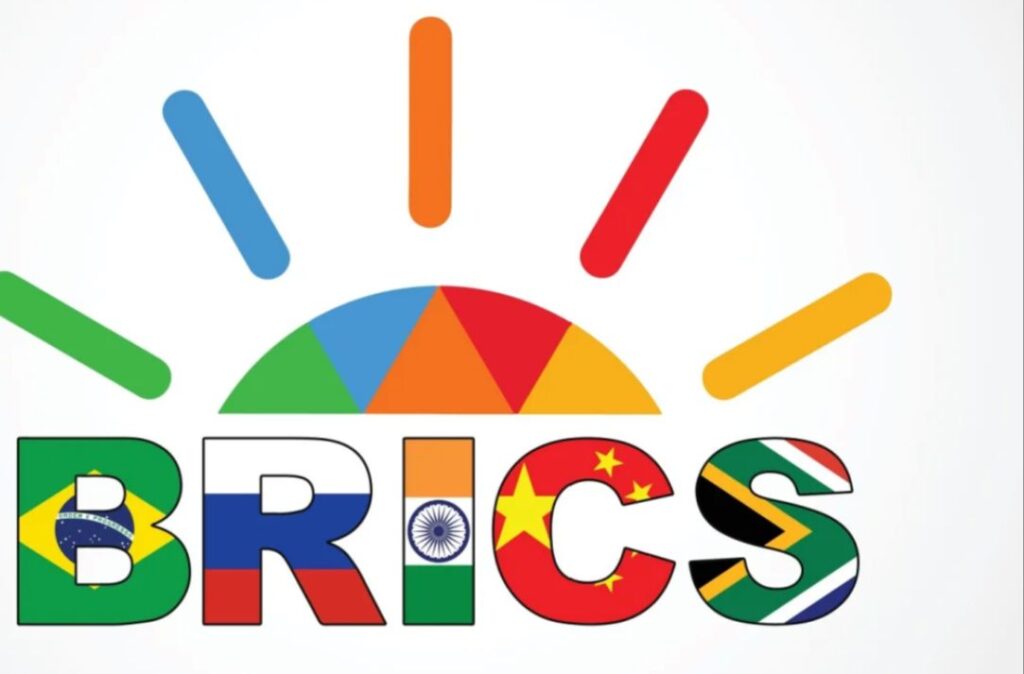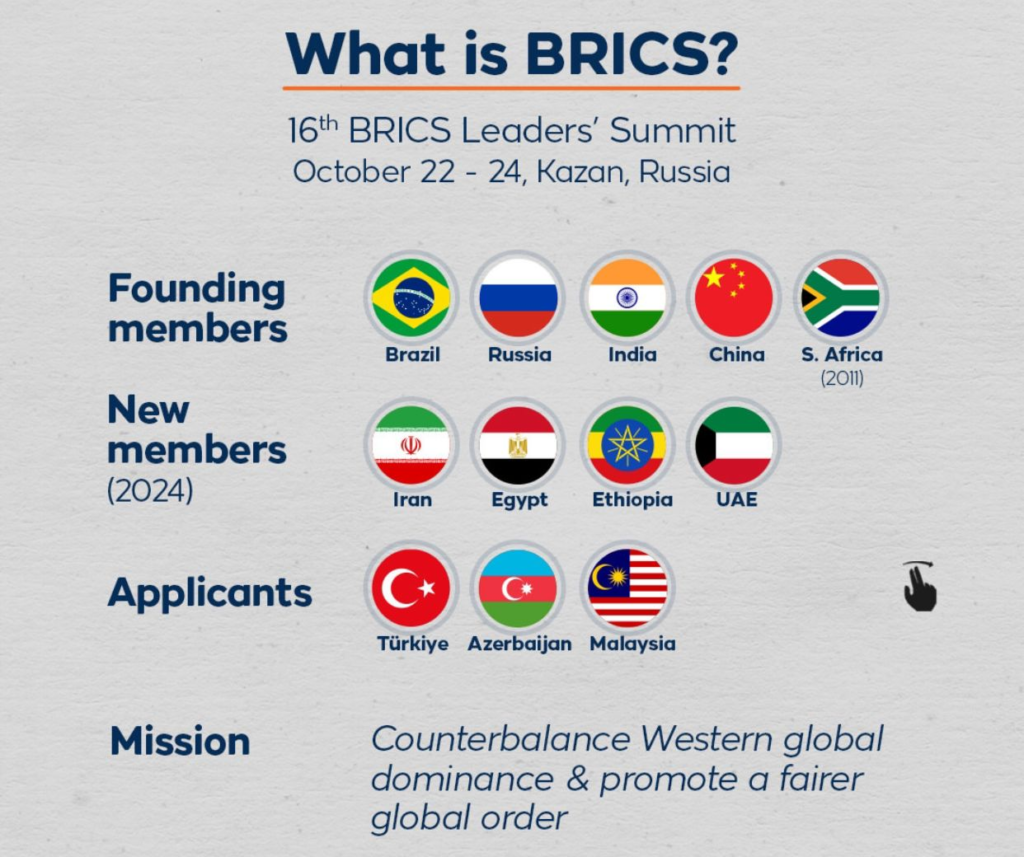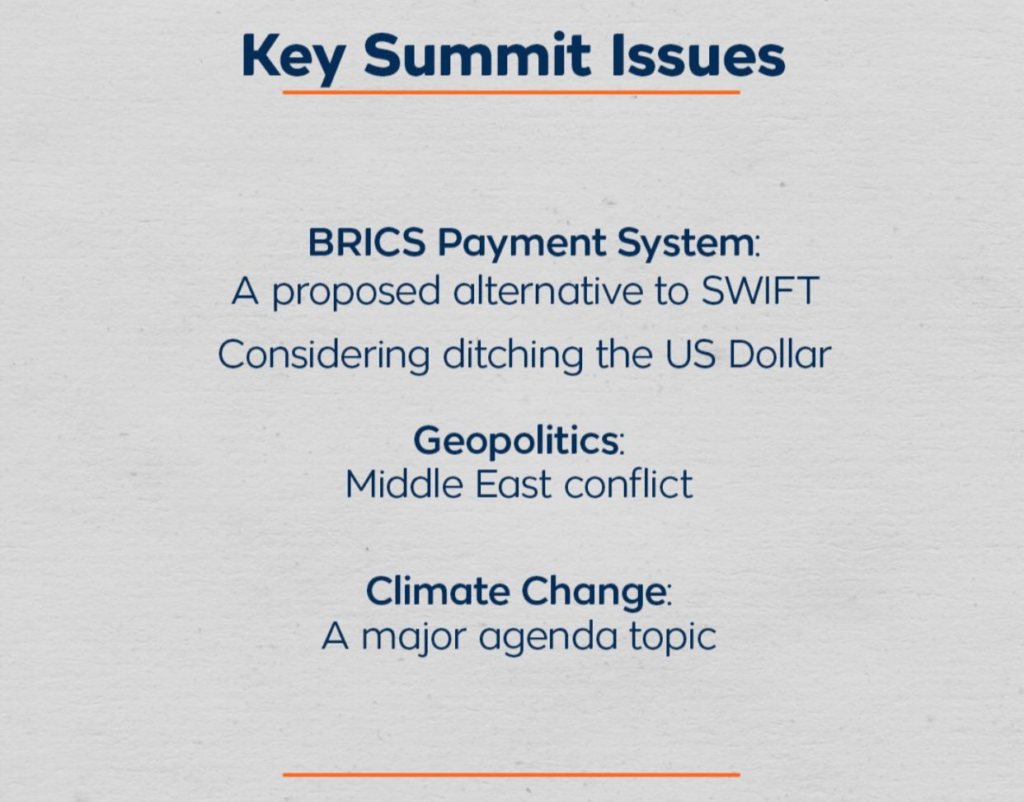
Meaning and its objectives
In 2006, Brazil, Russia, India and China created the “Bric” group of economies. South Africa joined in December 2010, making it “Brics”. This coalition of emerging economies seeks to redefine the current global order, often viewed as dominated by North America and Western Europe.
What is the main objective of BRICS?
The group was designed to bring together the world’s most important developing countries, to challenge the political and economic power of the wealthier nations of North America and Western Europe. This group has geo-economic, geostrategic and geopolitical implication on the global stage.

In economic fight back, the west has G7 while the Global South has the BRICS. The latter is trying to redefine a new world order away from the dollar dominated currencies.
Why does Brics matter?
Brics countries include major world powers, such as China and Russia, and countries which are influential on their continent, such as South Africa and Brazil.
The expanded group has a combined population of about 3.5 billion, or equivalent of 45% of the world’s inhabitants.
Combined, members’ economies are worth more than $28.5tn – about 28% of the global economy.
Will a Brics currency replace the dollar?
Nations often use the US dollar to trade between themselves.
Leading politicians in Brazil and Russia have suggested creating a Brics currency, to reduce the dollar’s dominance. However, this was not discussed at the group’s 2024 summit.
It would be impractical for these nations to create a common currency because their economies are so different.
BRICS largely wants to reduce global reliance on the US dollar.
Launching a rival to the SWIFT international payment system was high on its summit’s agenda in Russia this year. However, members avoided this slippery economic path.

Where did the BRICS 2024 summit happen?
Russian President Vladimir Putin is hosted BRICS summit in the Russia’s southwestern city of Kazan.
Who attended the the summit?
Leaders of BRICS member countries – including Indian Prime Minister Narendra Modi, Chinese President Xi Jinping and South African President Cyril Ramaphosa – are attended the summit.
UAE President Mohamed bin Zayed Al Nahyan, Iranian President Masoud Pezeshkian, Egyptian President Abdel Fattah el-Sisi and Ethiopian Prime Minister Abiy Ahmed were also in attendance.
Leaders of several other countries that have shown an interest in deepening ties with this block are also participated, including Turkish President Recep Tayyip Erdogan and Vietnamese Prime Minister Pham Minh Chinh.

Also Read: State Visit: Kenya’s Strategic Shifts
A new world order for Brics?
The five BRICS nations now have a combined gross domestic product (GDP) larger than that of the G7 in purchasing power parity terms. They are now giant economies, with even bigger populations and still greater ambitions.
The use of “unilateral sanctions” against countries and the continued dominance of the US dollar in global trade is something BRICS has vocally challenged.
The expansion of the block opens up new avenues for trade. One of the aims behind the planned expansion is creating opportunities for their nations to trade more easily with one another using local currencies.
Is this the beginning of a new world geopolitical and economic order?





